#interchangeable lens cameras
Text
Are Digital Cameras Done For, Thanks To New Smartphone Tech?
Is your interchangeable lens camera going to be obsolete soon?
“Like I haven’t heard this one before,” was what first came to mind when I read Sony Semiconductor’s President and CEO claim that smartphone cameras will outclass interchangeable lens cameras by 2024. That’s less than two years away and makes you wonder why Sony is still so heavily invested in producing mirrorless cameras. But with the VP of Qualcomm Product Management expressing a similar…

View On WordPress
#AI technology#dslr#ILC#interchangeable lens camera#interchangeable lens cameras#phone#phone camera#sensor#sensors#smartphone#smartphone camera#Smartphone Cameras#smartphone sensor
0 notes
Text
lord forgive me for i have thrifted a good digital camera

shes sou cute and small.. fits in the palm of my hand (well. lens is big but lens are meant to be big it said so in the bible)

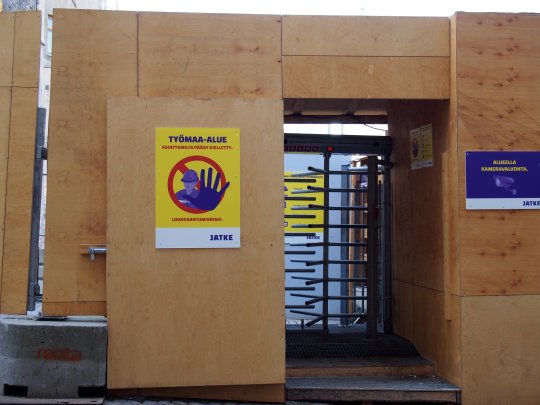

i took some test photos too on the way home just like. not adjusting anything just shot away to get a feel and its super nice... happy happy happy
#sorry. i am camera freak. I HAVE 4 NOW. to be fair all except one were thrifted and that was a gift#90s film camera i got for 15€ 90s digital floppy disk one for 50€ and now.. Her.... a proper camera body n lens#yaaay. plus the cute pink instax i got from my partner <3#tess talks#LISTEN.. up until now i had cameras with non-interchangeable lens. now i dont want cameras anymore i have all 4 elements
8 notes
·
View notes
Text
no self you do not need a point and shoot camera for your trip just for Eras you have enough camera gear just enjoy the fucking show you dummy
*hovers over add to cart*
#luckily the one i'd been looking at even though it's way too expensive for me is out of stock everywhere lmao#i'm gonna get a roll of fancy film and bring my point and shoot film camera and call it a day#since they won't let me bring in my real camera since it has interchangeable lenses and not a fixed lens#lol i said i was going to sell off the gear i didn't use anymore and well... well.
2 notes
·
View notes
Text
#Aerial Photography#BIONZ XR Image Processing Engine#Drone Photography#High-Resolution Sensor#Interchangeable E-Mount Lens System#Lightweight Design#Mountain Photography#Nature Photography#Remote Operation#Sony Camera Remote SDK#Sony ILX-LR1
0 notes
Text
Indian Digital Camera Market Size, Trends, Challenges and Future Outlook

In a world increasingly dominated by smartphones, the Digital Camera Market in India stands as a testament to the enduring passion for capturing life's moments in stunning detail. This market encompasses a diverse range of cameras, from point-and-shoots to high-end DSLRs, catering to photography enthusiasts and professionals alike. The Indian digital camera market is a significant contributor to the global market. The market size was valued at USD 1.8 billion in 2023. This figure is projected to grow at a CAGR of 4.2%, reaching an estimated USD 2.4 billion by 2028.
Digital Camera Market Analysis: A Multifaceted Landscape
A thorough Digital Camera Market Analysis reveals a market segmented based on various criteria:
Camera Type:
Digital Still Camera Market: This segment comprises basic point-and-shoot cameras, offering user-friendly features and affordability. The digital still camera market is expected to witness a decline due to the increasing camera capabilities of smartphones.
DSLR Camera Market (Digital Single-Lens Reflex): DSLRs offer exceptional image quality and interchangeable lenses, catering to photography enthusiasts and professionals. The DSLR camera market is experiencing a shift towards mirrorless cameras due to their portability and advanced features.
Mirrorless Camera Market: Mirrorless cameras (MILCs) combine the image quality of DSLRs with a compact and lightweight design. The mirrorless camera market is witnessing significant growth due to their versatility and technological advancements.
Lens Type
Interchangeable Lens Camera (ILC) Market: This segment encompasses both DSLRs and mirrorless cameras, offering users the flexibility to swap lenses for different shooting scenarios. The ILC market is expected to witness the most significant growth due to the increasing popularity of mirrorless cameras.
Take a look : Forecasting the Camera Market Trends and Segmentation
Top Players: A Competitive Landscape
The Indian digital camera market is a competitive space with established international brands vying for market share. Some of the top players include:

Canon
Nikon
Sony
Fujifilm
Panasonic
These companies are constantly innovating and introducing new models with advanced features like high megapixel counts, faster autofocus, and improved low-light performance. However, the rise of smartphone photography has led to a decline in market share for some traditional camera brands like Olympus, which exited the camera business in 2020.
Digital Camera Market Trends: Shaping the Future of Photography
Several key trends are shaping the future of the Indian digital camera market:
Smartphone Integration: The increasing sophistication of smartphone cameras is impacting the digital camera market. However, smartphones are unlikely to completely replace dedicated cameras. Instead, we are likely to see a convergence where smartphones cater to casual photography, while digital cameras remain the preferred choice for serious photographers and enthusiasts.
Focus on Full-Frame Cameras: Full-frame cameras offer superior image quality and low-light performance compared to crop-sensor cameras. The full-frame camera market is expected to see steady growth in India, driven by the increasing affordability of these cameras and rising aspirations of amateur photographers.
Rise of Online Retail: The growing popularity of online shopping platforms is influencing consumer buying behavior. Online retailers offer a wider selection of cameras and lenses at competitive prices, making it easier for customers to compare and purchase products.
Focus on Content Creation: The rise of social media platforms and content creation has fueled the demand for vlogging and video recording capabilities in cameras. Manufacturers are responding to this trend by introducing models with improved video features and functionalities.
Challenges and Considerations for the Future
Despite the promising future, the digital camera market in India faces some challenges:
Competition from Smartphones: As smartphone camera technology continues to improve, it will remain a significant competitor to entry-level and point-and-shoot digital cameras. Manufacturers need to focus on innovation and highlighting the unique advantages of dedicated cameras over smartphones, such as superior image quality, interchangeable lenses, and better ergonomics.
Economic Factors: Fluctuations in exchange rates and rising inflation can impact the affordability of digital cameras, especially high-end models. Manufacturers may need to explore strategies such as localized production or offering financing options to make cameras more accessible to a wider audience.
Shifting Consumer Preferences: Consumer preferences in the camera market are constantly evolving. Manufacturers need to stay up-to-date with these trends and adapt their product offerings accordingly. For example, the growing interest in videography necessitates cameras with robust video recording capabilities.
Camera Market Future Outlook: A Focus on Innovation and Specialization
The Indian camera market future outlook is expected to witness moderate growth in the coming years, reaching an estimated USD 2.4 billion by 2028. We can anticipate a future where:
Artificial Intelligence (AI) Integration: AI features like scene recognition and object tracking are likely to be incorporated into future camera models, making photography more intuitive and user-friendly.
Focus on Specialization: Camera manufacturers are expected to focus on specialized cameras catering to specific photography niches like wildlife photography, astrophotography, and sports photography. This will cater to the evolving needs of professional and enthusiast photographers.
Increased Focus on After-Sales Services: With the growing complexity of cameras, manufacturers may prioritize providing comprehensive after-sales services like training workshops and technical support to enhance customer satisfaction and brand loyalty.
Conclusion: Capturing the Future of Photography
The digital camera market in India is a vibrant and evolving landscape. With increasing disposable income, rising internet penetration, and a growing passion for photography, the market is poised for continued growth. While smartphone photography poses a challenge, dedicated cameras will remain relevant for serious photographers and enthusiasts who value superior image quality, creative control, and specialized features. By embracing innovation, focusing on niche markets, and providing excellent customer service, camera manufacturers can navigate the changing landscape and ensure the future of photography in India remains bright.
You can also read more at: Camera Market Trends, Segmentation and Forecast (2023-2030)
#digital camera in india#Digital Camera Market#digital camera market analysis#digital camera market growth#digital camera market share#digital camera market size#digital camera market segmentation#digital still camera market#dslr camera market#interchangeable lens camera market#mirrorless camera market#digital camera market trends#Top Players#Camera Market Future Outlook
1 note
·
View note
Link
Sony Alpha ZV-E10 - APS-C Interchangeable Lens Mirrorless Vlog Camera Kit - Black - Classified Ad
Large 24.2MP APS-C Exmor CMOS Sensor and fast BIONZ X processor
4K Movie oversampled from 6k w/ full pixel readout, no pixel binning
Product Showcase Setting transitions focus from face to object
Background Defocus button instantly toggles between defocus effect on/off
Easy live streaming w/ single USB cable and no extra hardware/software
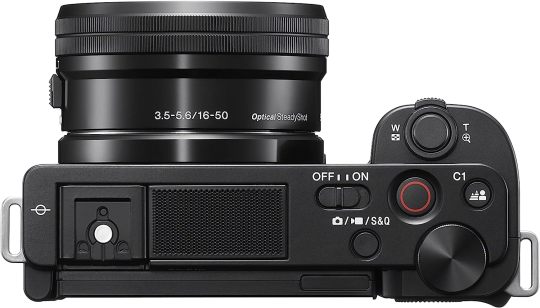

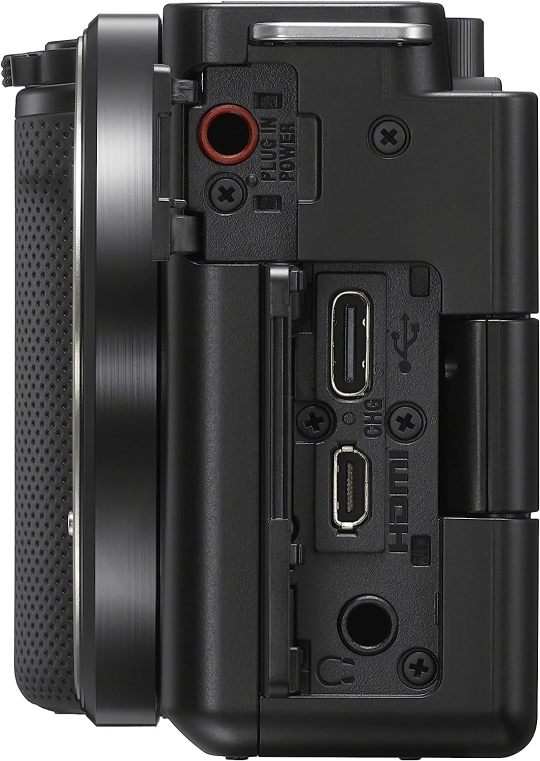
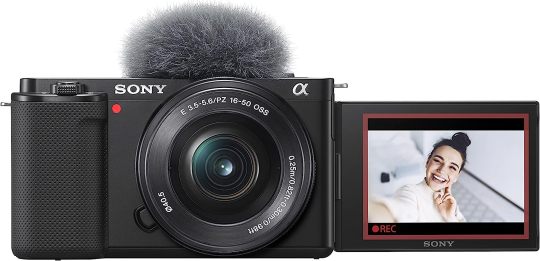

Buy at Amazon
#Sony#sony alpha#Sony Alpha ZV#sony alpha zv-e10#Sony Alpha ZV-E10 - APS-C#Vlog Camera Kit#Mirrorless Vlog Camera Kit#Lens Mirrorless Vlog Camera Kit#Interchangeable Lens Mirrorless Vlog Camera Kit#classfied ads
0 notes
Text
Interchangeable lens camera retro design

INTERCHANGEABLE LENS CAMERA RETRO DESIGN PORTABLE
Built to be solid, it fits comfortably in a jacket pocket or a handbag for a night on the town, or to take on any spontaneous adventure. Its retro-chic look turns heads, from tech aficionados and camera buffs to the fashion-conscious and everyday point-and-shooter. The new camera’s high-end, stainless-steel body is easy to handle and carry, and has the styling and refinement of a precision watch. Since it’s the only camera to offer in-camera art filters for both still photography and videos with high-end audio, even your everyday activities will look and sound amazing! You can chronicle more of the life you actually lead, rather than just special occasions you prepare for, like weddings, holidays and birthday parties. Make your Facebook, MySpace, Flickr, YouTube, Twitter and personal blog postings unique by capturing and sharing more videos and photos. You can share more of your life with the world when the E-P1 travels with you.
INTERCHANGEABLE LENS CAMERA RETRO DESIGN PORTABLE
Moreover, its sharp HD video capture and stereo audio helps you live a better-documented life because you’re carrying one portable camera rather than a DSLR, an HD camcorder and a high-end audio device. Now, the E-P1 changes the game with a compact body that delivers the professional quality images of a DSLR without the bulk. A DSLR delivers incredible image quality, but most aren’t compact enough to roam with you. Shooting spontaneous images of your daily life usually means snapping small, grainy images with your cell phone or using a point-and-shoot if it’s handy.

0 notes
Text
Interchangeable lens camera retro design

Interchangeable lens camera retro design full#
Originally, the autofocus had serious issues with speed and ability to find focus in dim light. The camera has been very successful, despite a number of flaws. It is a very high performing camera, with outstanding color and fantastic high ISO capability. Perhaps the biggest success is the outstanding sensor that Fuji incorporated into the X100. It harkened back to what was great about simple mechanical film cameras, yet incorporated the latest technology. This classic sense of design, with switches and dials and knobs, struck a chord with photographers young and old.
Interchangeable lens camera retro design full#
The lens is a fixed 24mm f/2, yielding a field of view similar to a 35mm lens on a full frame body, which is a good length for many photographers for street shooting or general photography. It looked like a classic Leica M rangefinder, yet incorporated an amazing image sensor and a revolutionary new hybrid viewfinder that combined a rangefinder-like optical viewfinder with electronic overlays, as well as the ability to switch entirely to a through the lens electronic finder. It had classic styling, a return to knobs and dials and even a functioning aperture ring. When Fuji released their X100 camera, the photography world gasped. Then Fuji got involved, and the whole retro trend took off. Despite the retro look, it remained functional. It started with the Olympus E-P1…a classically styled stainless-steel body that exuded the feel of a 1960s Olympus Pen F. An interesting trend has emerged during this whole mirrorless craze.

0 notes
Text
Frogman's Camera Buying Guide
A few weeks ago someone asked if I could recommend an interchangeable lens camera (ILC) to supplement their smartphone photos and hopefully get better pictures of important things like vacations and pets.
I decided to go very extra with my response and due to that... I'm still not finished with it.
I'm worried I am letting this person down because they did not ask for a giant post explaining every detail about cameras in the history of forever.
So I am going to do a camera recommendation post without as much explanation and hopefully I can finish the giant post at some point in the near future.
If you want to take better pictures you are probably going to need a camera with a decent sized sensor, a fast lens, a tripod, and a flash.
The bigger sensor gives you more dynamic range so you can capture brighter and darker things in the photo.
A fast lens has a giant hole in the front that lets in a ton of light. That hole is called the aperture and the bigger it is, the better your photos in dark environments will be. So you will want something that does f/1.8 or f/1.4 (lower f-stop number = bigger hole = more light). This can also help you get a lot of cool background blur.
A tripod will help get you longer exposures without any blur from camera shake. Especially good for landscape photos.
And a flash is for taking photos of pets and other moving subjects when you are indoors and don't have a lot of light. A flash is an absolute game changer for indoor photos.
HOWEVER, never point it directly at your subject.
Point it at a large white ceiling or wall. The flash happens so fast that it freezes motion. It is how I got all of my indoor photos of Otis.
Here he was playing and being rambunctious and he is not blurry.


I used no special settings. I just stuck on a flash and pointed it at the ceiling and suddenly sheep are sticking to things.
Oh, and one other huge benefit of using a flash... you can take much better photos of pets with dark fur. So if you have a cute little void in your home, a flash can help you capture detail in their fur.
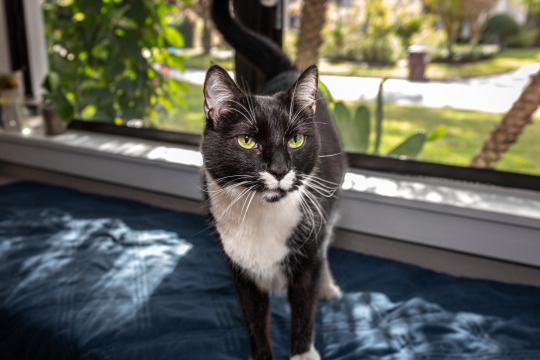
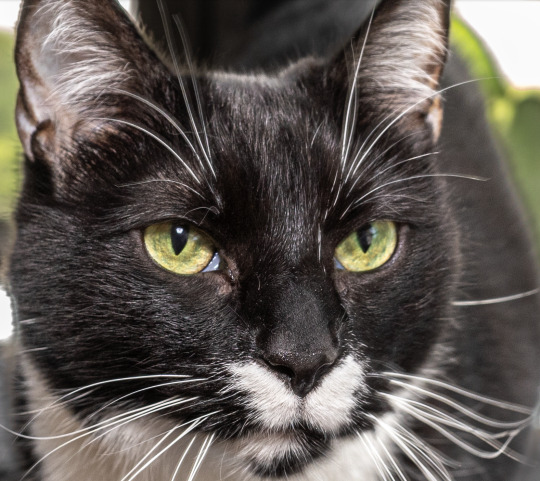
Just lift the shadow slider in your image editor and that beautiful fur will reveal itself.
If you get an ETTL or TTL flash, it will output the correct amount of light automatically. You can literally just put your camera in automatic mode, aim the flash at the ceiling, and press the shutter button.
Before I talk about recommendations I want to make one thing very clear.
GETTING A GIANT CAMERA WILL NOT AUTOMATICALLY GIVE YOU BETTER PHOTOS.
Aside from my flash aimed at the ceiling trick, a big boy camera is not a magic solution for better photos. In some cases, you might actually get *worse* photos than your smartphone. You need to learn the basic fundamentals of photography and you also need to learn some basic photo editing skills.
Smartphones employ powerful algorithms and computational processes to make every photo you take look as good as possible.
ILCs say, "Here is your RAW data, you figure out the rest."
You don't have to become an expert, but if you watch this free 6 hour photography course, that will ensure you have the knowledge needed to improve your photos.
youtube
Okay, let's get into the nitty gritty of buying a nice new old ILC.
If you are on a tight budget and cannot afford a fancy mirrorless camera, I would highly suggest a used DSLR. You can get them for very reasonable prices. And unlike just about every other modern technological gadget, cameras and lenses are built to last for decades. So I have no qualms about recommending used photography gear.
However, I do highly recommend using either KEH or MPB, as they have a long trial period and decent customer service. If something goes awry with your used gear, KEH has a 180 day warranty and MPB has a 6 month warranty. So there is much less of a risk than eBay or Facebook Marketplace. You pay a bit of overhead, but the piece of mind is worth it.
Before I start my recommendations I want to quickly explain the difference between APS-C and Full Frame camera bodies. (For brevity's sake I am going to omit Micro Four Thirds bodies as they are not typically geared toward beginner photography.)
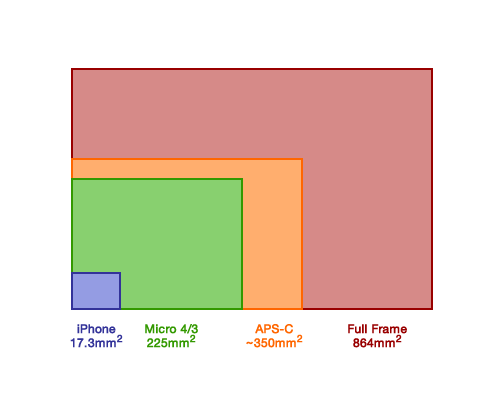
APS-C has a "crop" sensor. It is a bit smaller than full frame and does not perform as well in low light (more noise). However these bodies are cheaper and can still produce great photos. You can see above the sensor is still significantly larger than a smartphone. APS-C adds a 1.5x zoom to all lenses. This can be annoying in small spaces but advantageous for outdoor photography like wildlife and sports. You can use full frame lenses on a crop sensor body (within the same brand). APS-C lenses are usually cheaper but of lower quality.
Full frame has a larger sensor that will give you less noise in low light. It is also much easier to get background blur. Full frame also allows you to work in more cramped spaces. You *cannot* use APS-C lenses on a full frame body. However, the lenses meant for full frame cameras tend to be better quality in general.
If you can save up a little more and get a full frame body, I would recommend it. These bodies used to be geared more toward professional use, but since mirrorless cameras became popular, used full frame DSLRs have become much more accessible to those on a budget. Full frame cameras make it easier to get better results in challenging circumstances. And challenging conditions are really the main area where ILCs still kick a smartphone's ass.
For tight budgets I would recommend the following...
Canon or Nikon APS-C DSLR camera body
50mm f/1.8 lens (Nifty Fifty)
18-55mm APS-C lens (good for landscapes and portraits)
Yongnuo ETTL Flash
There are lenses called "superzooms" which can go from (as an example) 18-200mm or 70-300mm and other crazy focal lengths. That sounds fantastic and very versatile... but these are usually utter shite. You may be tempted to get one of these lenses hoping it can do everything you need, but there are no free lunches in lens land. Unless you are spending many thousands of dollars, the wider the focal range, the worse the lens will be.
When you stick to the 18-55mm range, you can be assured the images will be decent. And if you find yourself really needing a telephoto lens, you can save up and add it to your collection later on. The 18-55 will give you wide angle for landscapes all the way to slightly telephoto for portraits and moderately close wildlife. This lens cannot be used indoors or at night without a flash. Which is why I recommend the Nifty Fifty for that purpose. $100 for a moderately sharp low light lens is a no brainer.
Also, stick to Canon, Nikon, Sigma, or Tamron lenses. You can try exotic 3rd party lens brands when you know more what you are doing. And always make sure the lens has autofocus before buying.
It's hard to give you exact recommendations as used items are not reliably in stock. So I'm going to show you an example of the above, but I am not necessarily saying you should buy this *exact* combination. You might be able to get something similar with Nikon as well.
Canon 60D APS-C DSLR
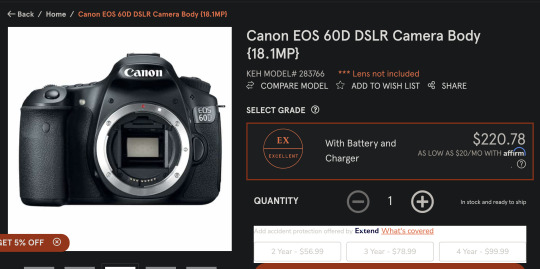
50mm f/1.8 lens

Canon 18-55mm APS-C lens (EF-S mount)

Yongnuo TTL Flash
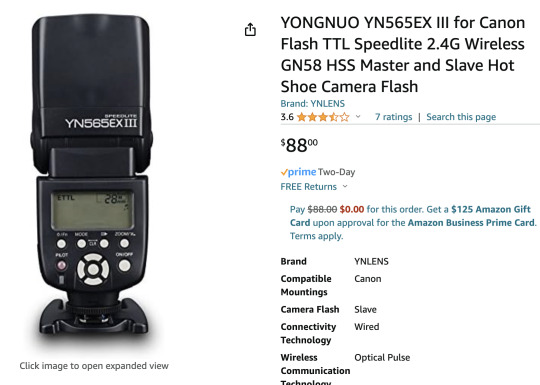
(I wouldn't recommend getting a used flash, as the Yongnuo is already a great price and you can't know if someone used the flash 100,000 times or 20 times.)
Altogether that is about $500. You can start with the 60D and the 50mm Nifty Fifty for $330 and add on the other two items later on.
My recommended full frame setup...
Full frame Canon or Nikon DSLR body
50mm f/1.8 lens (same as before)
24-70mm full frame zoom lens (full frame equivalent to 18-55mm)
ETTL Yongnuo flash (same as before)
And an example from KEH might be...
Canon 6D Full Frame DSLR


Canon 50mm f/1.8 Lens

Sigma 24-70mm Full Frame Zoom lens (EF mount)

Yonguo ETTL Flash

And that would be about $800 total.
Again, you can start with just the camera and 50mm lens and add the other items later. So invest $500 initially and go from there.
And just to give a Nikon example as well...
Nikon D600 Full Frame DSLR
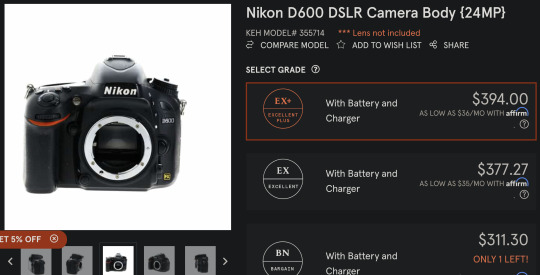
Nikon 50mm f/1.8 Lens
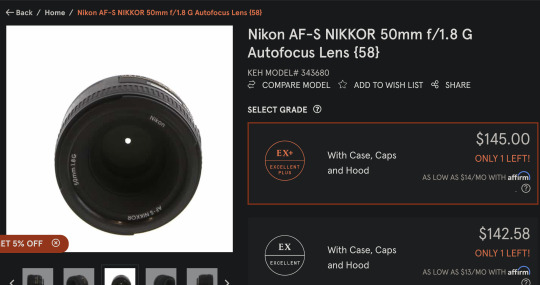
Tamron 24-70mm
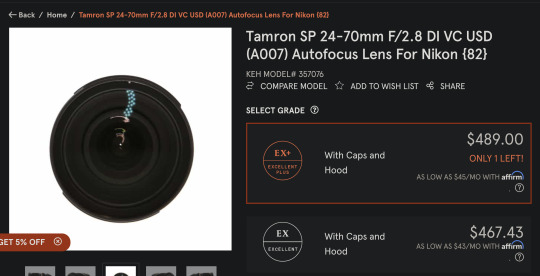

Yonguo ETTL Flash (Nikon version)

I highly recommend researching any camera body and lens before purchase. I can vouch for the items above, but you should definitely check out some YouTube videos before buying.
All of the stuff on KEH and MBP is marked down in price for aesthetic reasons. They do test everything to make sure it is functional. If you care if the camera or lens looks pristine, it will cost a little extra. But if you don't mind if it is beat to hell, you can save some money. Ugly or not, you will get the same photos out of the gear. As I said, photography stuff is built to last for a long time. Almost all repairs are due to user damage and not defects. And usually defects manifest when the product is brand new.
Oh, I forgot about the tripod!
Amazon's $35 tripod is surprisingly decent. It even got a good review on a very picky tripod review site. I recommend starting with this and then upgrading when you know more what you need out of a tripod.
Amazon 60 inch Tripod

I worry I'm leaving out a lot of important information, but hopefully I can expand in the other post I am working on.
That said, if anyone is thinking of buying a camera and you are not sure about the items you selected, please feel free to message me and I will help you assess your choices. Please make sure you include a budget range when asking for buying advice.
I hope that helps. I will try to finish the more in depth post soon. And it will include tips for how to get better photos from your smartphone if you cannot afford an ILC at the moment.
Further resources...
Recipe for Landscape Photos
Froggie's Encyclopedia of Lens Terms
201 notes
·
View notes
Text
Mr. Puzzles Ler HCs

(Because we are so damn lee for this man I swear!!)
-> Depending on the situation, I can see Mr. Puzzles being either a subtle ler or a meannnn, mean ler. This definitely depends if he is in front of a camera or not, as the man does have a reputation that he’d like to upkeep, thank you!
-> In more subtle ler situations, he covers up his little attacks as a mere arm wrapped around his unaware (or aware) target’s shoulders or waist. As he speaks to the audience, or to the camera, he’d “absentmindedly” or “accidentally” wiggle his fingers on the ticklish areas of his target’s body.
-> He will also downplay his actions too, acting as if he’s not doing a thing as he tickles his poor lee before the eyes of a crowd, or the lens of the film camera. He wears that classic, professional smile on his face(? screen?) as he goes on and on about ratings, all while his little lee is giggling in his grasp , searching for an escape from this agony.
-> If he becomes “suddenly aware” of the person giggling in his grasp, or of his actions, he will resort to two things. Teasing the poor person, and complimenting them all the same. He can and will use both of those interchangeably.
-> Mr. Puzzles will go from asking them what is so funny, what they’re laughing at, if he’s really that funny. Then, he’ll switch to complimenting the sound of their laughter. He would comment on how sweet or cute their giggles are, or how endearing their laugh is. And, if his lee happens to snort or make any “unflattering” noises (to some people), he will dove over those sweet noises that they make.
-> This man definitely uses classic teases here and there. Expect “kitchy kitchy coo”s and “awww, does that tickle?”s from him. He’s not exempt from using them in front of others.
-> Mean ler moments? Gosh, you have to provoke him enough or get on his nerves enough to push him into wrecking you. It’s going to take a while however. He doesn’t want to wreck you in front of a sea of eyes, or a camera. We know how dedicated he is to having “five star reviews” too on his shows. You’re really going to have to push his buttons.
-> Or, you know, you could ask him to wreck you when the two of you are in more private moments, or behind closed doors. But let’s be honest, are you brave enough to ask him that?
-> Push him enough, and when the two of you have the time to be alone in complete safety, he’s going to pull you close in a secure hug. Or if hugs aren’t your style, he’ll get real close to you. And then, he strikes.
-> He will be much more rougher with his methods, scribbling his digits into your body as he targets those sweet, ticklish parts of your body that make you absolutely howl, darling. He’s going to switch between spots too quite often to keep you on your toes. He could be absolutely demolishing your ribs one moment, then clawing at your stomach or hips the next.
-> Mr. Puzzles will stick to the previous teasing methods as mentioned earlier. He’ll compliment your laughter and stick to those simple teases. But, he’ll also mock you. Not with real malice, of course. But, what do you mean “not there”? You’ve been bugging him all day, wanting him to tickle the hell out of you, and now you’re telling him not to go for that one spot that has you make the most delicious noises? Oh, darling, you had to have known what you’ve gotten yourself into!
-> “It tickles?” Yeah, he sure hopes it does! Or else, either he’s not targeting the right spots, or he needs to come up with a new tactic. Oh, and now you’re calling him awful? Evil? Telling him to shut up? Mr. Puzzles is going to have you pay for calling him such rude, harmful words. Tickling your tummy seems like a reasonable price to pay, don’t you think?
-> He’s making sure you’re fine after he wrecks you, honestly. Unless, like, he really doesn’t like you. Expect a cup of water, and him telling you that you handled his attack so well. Maybe a series of flustering compliments too about your smile, your eyes, and your laughter.
28 notes
·
View notes
Text
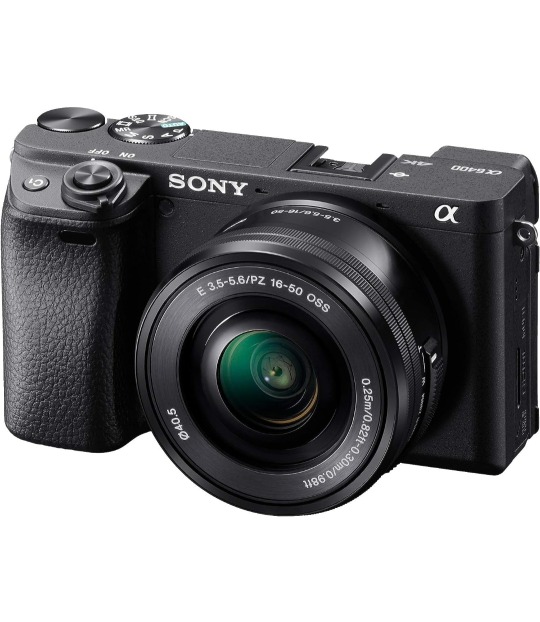
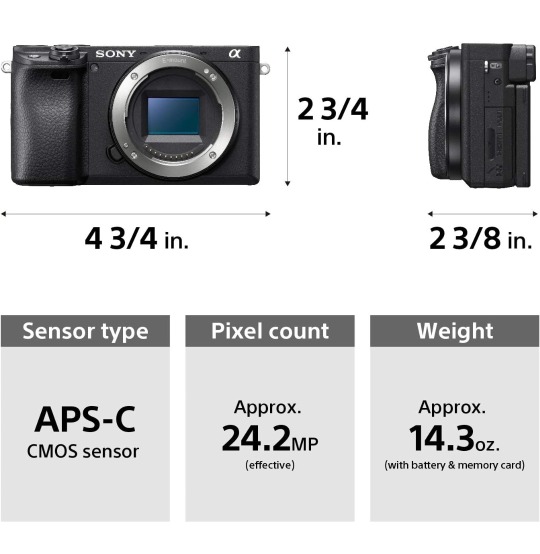
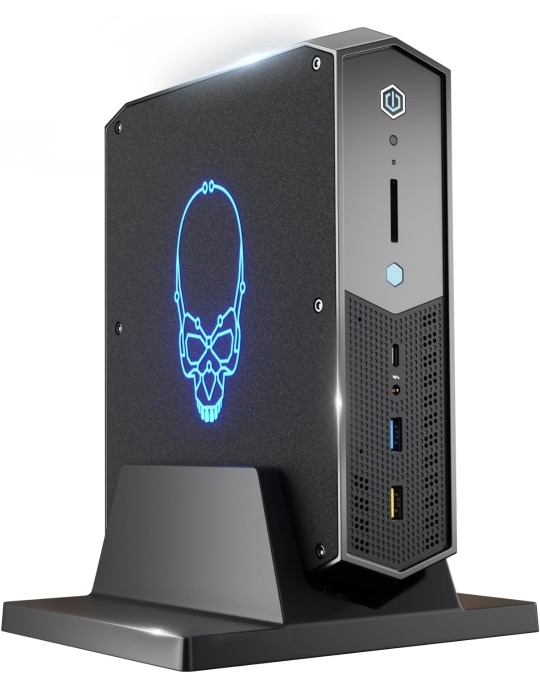
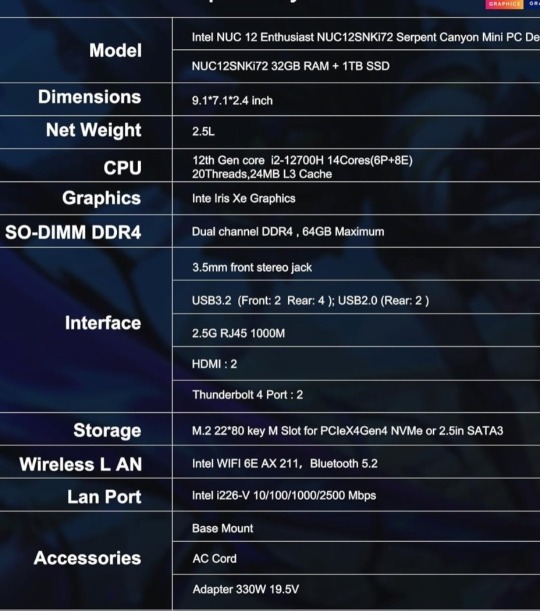
Website is in the tags!
#zoom in to see the specs#which item poll#pc#camera#photography#photographer#camera stuff#electronics#polls#poll game#random polls#poll blog#gimmick blog#amazon
20 notes
·
View notes
Text

Plaubel Makina I - First generation Makina press camera that began production in 1912. Folding camera with precision knob focusing, multiple viewfinders, and interchangeable film backs. Comes with single-coated 100mm f2.9 Anticomar lens. No built-in rangefinder. Entirely metal construction.
47 notes
·
View notes
Note
MORE!! We shall always have more questions regarding these goobers.
Can mimics detect if someone is lying through scent? Can they smell emotions like Tanjiro? Can a speaker mimic sense if someone is lying through listening for an elevated heart rate or breathing? Can a camera mimic’s lens feel touch, like a human eye? Can a TV mimic’s screen feel touch? How do mimics bathe? Do they wash themselves in the rain or lick themselves? Do they take their ‘clothes’ off to bathe? Do camera mimics have toes/toe beans under their shoes or do their shoes not come off (does this apply to TV mimics too)? Do all speaker mimics have interchangeable arms and wings? Can TV mimics make other things/humans invisible if they go invisible while in contact with them? Can a mimics claws retract so they can grab stuff better without puncturing it or damaging it by accident?
Questions 1-3: Speaker mimics can tell the most about whether or not someone is lying. They can also tell if they love someone through the same means. Elevated core rotations (for alliance members) can help a speaker mimic tell if the individual is stressed, lying, or in love. While detecting lies through scent is much more difficult, some scents come through stronger than others. Like pheromones. If you want to interrogate someone for one reason or another, your best bet is to use a speaker mimic.
Can a Camera mimic's lens feel touch?: Yes. But it's similar to a human eye, even when under a pane of glass. It's sensitive and the metal lenses surrounding it may snap shut on your fingers if you touch it. Best to treat them like eyes and keep your digits away from them.
Can a TV mimic's screen feel touch?: Yes! They can feel touch on their screen, but it's not actually a screen. It's a luminescent square that takes on the appearance of a TV unit. It's "screen" is actually a layer of skin that has shifting colored cells on the inside, similar to a cuttlefish. Which expand and contract to show expressions and to send messages.
How do mimics clean themselves?: Mimic clean usually through tongues, but they also bathe similarly to humans. There's designated areas in nests that involve water and mimics will clean off themselves with chemicals similar to how humans do it. They usually only engage in licking when they are covered in blood from their victims or their offspring need a quick clean up from blood or food that has smeared their face. While they are animalistic, they still carry over traits from their "human era" of mimicry.
Can mimics take off their clothes?: Primarily, no. Their clothes are actually their version of skin and it protects them from the elements and attacks. However, they can reduce their "skin" to a more "bare" version, also called their "underskin". Which is what constitutes them as being "nude". Think of it as a temporary absorption of their outer layer to reveal the inner layer hidden underneath. Some mimics will even "shed" their skin to reveal a new healthy layer that is much softer and loser for a time before it thickens up and accommodates the growth of the mimic. This only occurs with young mimics and infants. As for having toe-beans? Sure. Why not? However, it's merged with their "shoes". As the shoes themselves can't come off.
Do all speaker mimics have interchangeable wings?: Yes! All speaker mimics have their own wings. They aren't all the same either! For example, if you have a speaker mimic that has a pinstripe suit on, the wings will also have those stripes! Same with colors! If there's a gradient, pattern, or accessories on the sleeves of the speaker mimic, they carry over into the wings design! So you can have wings with stripes, jewels, patterns, and styles all catered to unique mimics!
Can a TV mimic render other things invisible?: Both yes and no. The object itself can't be turned invisible, but if it's hidden under their cloak, the object won't be seen. So it would have to be hidden under the mimic's actual body to render it invisible.
Can a mimic retract their claws?: In their "idle" forms, yes they can! It help to fool their prey and to prevent harming their allies or friends when they grab them or touch them.
#katarikitten#haxorus imp#hax speaks#cosmica galaxy#cosmica-galaxy#skibidi tag#skibidi mimic#skibidi toilet mimic
25 notes
·
View notes
Note
I've been inspired (in no small part due to your photos) to get a camera and start doing some photography. Do you have any tips for a beginner? Good cameras to get, things you wish you had known, that kind of thing? Your photos look so good!
Heyo! Welcome to the photography world! I'd glad I could inspire you a bit.
A few tips I've learned recently:
For buying gear, the actual camera doesn't really matter for beginners. Any camera will take good photos, even old ones.
If you're feeling sociable, go to a local camera store and try out some used camera. Pick one that feels good and fits your budget. Brand doesn't matter.
Last, if you get a camera with interchangeable lenses, spend more on a lens than the body. High quality lenses will continue to be great on newer, better camera bodies & make cheap bodies take amazing photos.
I've got two posts for more tips, check 'em out!
Okay, we've made it to the bottom of the post. My starter camera recommendation has always been a Panasonic G or GX body (GX1, GX7, G7, GX85, or even a G9 or GX9 if you're feeling very spendy) + a Panasonic 25mm f/1.7 lens, which is still one of my favorite lenses of all time.
Prefer a mirrorless camera over a DSLR. DSLRs are cheaper, but harder to learn. You can adapt DSLR lenses to mirrorless if you like using cheaper DSLR lenses.
9 notes
·
View notes
Text

An acquaintance asked why, if I'm a photographer as I claim, I don't have a phone with a better camera.
After all, the one on the iPhone SE is distinctly "last generation" with its 12 megapixel camera and less than stellar lens.

OK, so maybe it struggles at night. And yes, the images can be a bit grainy and noisy.
And yes, my FujiFilm X-T20 - with its interchangeable lenses and more sexy settings than you can shake a stick at - is technically a better camera. And yes, it takes better photos in my hands (I hope) than any phone I've had can manage.

But I like my iPhone SE. It's simplicity makes it idea for snapshots on the go, or capturing random moments in time. Sometimes it captures something amazing, sometimes not. I guess that's why my phone doesn't automatically post every photo I take to Tumblr.
Like the old photographer's saying goes, "The best camera is the one in your hand", and for now I'm quite happy with my bottom-of-the-range iPhone.
#photography#street photography#original photographers#my photography#photo blog#blogger#iphone#iPhone Pics
7 notes
·
View notes
Note
Hey Micheal what camera would you reccomend to some one starting out taking photos & what’s your set up?
Hey!
I'm a firm believer in buying an inexpensive DSLR or mirrorless setup with interchangeable lenses. You don't have to break the bank on a starter setup — just focus on buying a camera with a robust selection of first- and third-party lenses.
My usual advice is to start simple and only upgrade gear once you run into a physical or technical limitation that stops you from realizing your vision. For example, if you're not getting the shallow depth of field you want with your current lens and body, then maybe it's time to consider buying a lens with a larger maximum aperture (e.g., f/1.8 or f/1.4).
I started out with a Nikon D50 and a Nikkor 50mm f/1.8. That served me well for nearly five years, before I started running into technical limitations with the sensor that made shooting night photos difficult. That's when I switched to shooting medium format film for a spell, before ultimately settling on a full-frame Canon digital body. All-in-all, that experimentation period took about 17 years (I'm still not done).
That said, shop used for your first camera. Places like KEH or MPB have a great selection of tested and used gear. I personally shop from MPB. Here are a few great beginner full-frame camera bodies. I'll break out lenses later on in this post.
Why full frame? I think you get superior image quality, better depth of field, better image resolution for printing, and phenomenal dynamic range.
Canon EOS 5D Mark III ($714)
Nikon D750 ($774)
Canon 6D Mark II ($884)
Nikon D810 ($819)
Anyone of these are going to get the job done and then some.
The world of lenses is complicated and varied. You'll have “prime purists” that will tell you to eschew zoom lenses and only shoot prime (a lens with no zoom capabilities). You'll have people that say longer telephotos are all you need. The truth is, you'll find your niche the more you shoot. I prefer prime lenses for their simplicity (and the less I have to think about, the better).
I'll break these out by purpose.
Portraiture
Canon EF 85mm f/1.8 ($259)
Canon EF 50mm f/1.8 ($134)
Nikkor 85mm f/1.8 ($184)
Nikkor 50mm f/1.8 ($78)
Landscapes
Canon EF 24mm f/2.8 IS ($294)
Nikkor AF 24mm f/2.8 ($134)
Multipurpose
Canon EF-S 18-55mm f/3.5-f/5.6 IS STM ($54)
Nikon AF-P DX Nikkor 18-55mm f/3.5-5.6G ($73)
I could go on and on, but this is enough to get you a start in the right direction.
If I were to put together a beginner kit with the above options, I would snatch up the Canon 5D Mark III with the Canon 50mm f/1.8 and the Canon EF 24mm f/2.8 IS. Total cost before taxes and shipping would be $1,142. You would have an incredibly flexible kit that lends itself to portraiture, landscapes, and street work, all for the same price as a new “prosumer” kit with only one lens from Amazon or other big box stores. If you don't know which direction you want to go, or you want to save on cost, there's nothing wrong with swapping out the two primes and grabbing the 18-55mm kit lens for next to nothing. That will at least let you dabble with different focal lengths and see what suits you.
I'm happy to answer any other questions here!
P.S. I shoot with a Canon EOS 6D Mark I and usually have a Sigma 35mm f/1.4 lens mounted on it for street portrait/street landscape work. My other carry-around camera is a Ricoh GR III.
10 notes
·
View notes